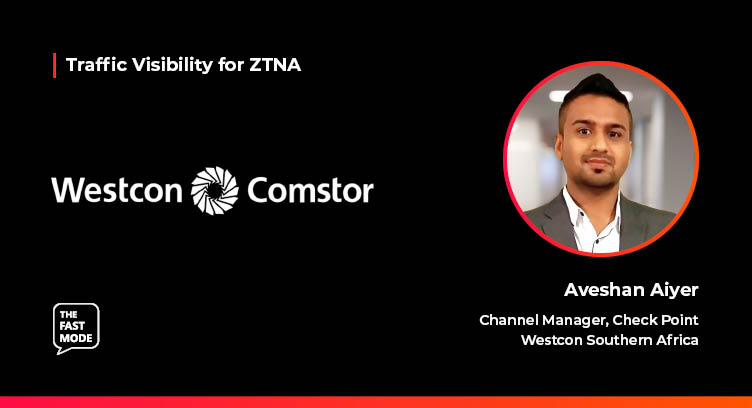The Fast Mode spoke to Aveshan Aiyer, Channel Manager for Check Point at Westcon Southern Africa on the impact of traffic visibility on ZTNA networks. Aveshan joins us in a series of discussions with leading cybersecurity and networking vendors, assessing the evolution of ZTNA technologies, the roadmap for ZTNA deployments, the benefits of ZTNA for enterprise and telco networks, and the need for real-time traffic visibility technologies such as DPI for ZTNA.
Ariana: Why is ZTNA the future of enterprise security?
Aveshan: As we move away from the old 'trust but verify' security model, we need to embrace an era of cybersecurity where trust isn’t assumed. It's clear that Zero Trust Network Access represents a major evolution in enterprise security, and organisations that fail to adopt ZTNA risk falling behind as remote work and cloud adoption accelerate.
ZTNA is the future of enterprise security due to several factors that address the limitations of traditional security models and emerge as a strategic ally for enterprises that require heightened security measures. ZTNA reduces reliance on outdated security models, providing a more effective and streamlined solution for protecting valuable assets. This is particularly important in an era where cloud services, remote work, and hybrid arrangements are becoming the norm. Moreover, ZTNA seamlessly adapts to these shifts and offers a robust defence mechanism prioritising security and user experience. It is not just about protection but about creating a smarter, safer, and more constructive security environment.
Ariana: Why is cloud a key component of ZTNA?
Aveshan: Cloud infrastructure is a perfect example of the need and application for Zero Trust Network Access (ZTNA) as it provides the necessary scalability, global reach, and integration capabilities to ensure a secure, adaptive, and seamless user experience. Below are some of the top reasons ZTNA is best suited to the cloud:
- Flexibility: Cloud services enable corporates to host applications and data across various locations, making it essential for ZTNA to operate effectively in distributed work environments and across various cloud services. As the number of remote users and devices fluctuates, cloud resources can be scaled up or down to meet demand, ensuring a responsive ZTNA implementation on demand.
- Cost-effective: Cloud solutions remove the need for organisations to invest in hardware infrastructure, reducing upfront costs while providing usage-based pricing.
- Agility and Security: Cloud providers offer identity and access management, encryption, and threat intelligence services that enhance the ZTNA security posture. The delivery of continuous updates and ongoing improvements is seamless and rapidly integrated without the need for manual intervention or significant disruptions. This provides a centralised management system, simplifying the configuration, monitoring, and updating of security policies from a unified platform.
An example of how the cloud is being utilised in this regard is through the implementation of Check Point's ZTNA-as-a-service solution, Harmony Connect Remote Access, which effectively enables secure and intuitive access across a wide range of enterprise networks and platforms. Complementing this solution are Check Point's Security Gateways, which provide meticulous network segmentation and visibility, resulting in a stringent "Least Privileged" access policy that ensures that only authorised entities can access critical assets.
Ultimately, as enterprises embrace distributed, cloud-based environments, ZTNA becomes critical to secure today’s perimeter-less networks. Realising the full benefits of Zero Trust requires collaboration between security innovators like Check Point and partners focused on driving adoption like Westcon-Comstor. This partnership exemplifies the power of alliances in providing leading, business-aligned ZTNA capabilities.
Aveshan Aiyer is the Channel Manager for Check Point at Westcon Southern Africa.
This interview is a part of The Fast Mode's Next-Gen DPI Traffic Visibility for ZTNA segment, featuring over 40 leading cybersecurity and networking solution providers and their views on the importance of traffic visibility for ZTNA. A research report on this topic will be published in January 2024 - for more information, visit here.


















